
‘The Sinking Ship & Your Resilience’ Webinar
Johanna Hooper, Performance Mentor.
Attending this seminar was incredibly insightful. It was interesting being able to hear the notion of ‘resilience’ from someone who has experienced stress and has now used effective action-based plans – whether these were immediate or ones that tackle the underlying cause to build resilience. Johanna Hooper hosted a pilot seminar on ‘What can a sinking ship tell you about your resilience’ run by the Resilient Pilot. Johanna has run many resilience seminars in the form of air safety conferences, TedX talks and talks for the RAF.
This blog will give you an insight into the seminar and best ways to build your resilience as an aspiring pilot or a pilot in training.. First, it’s important to know what we mean when we say resilience.
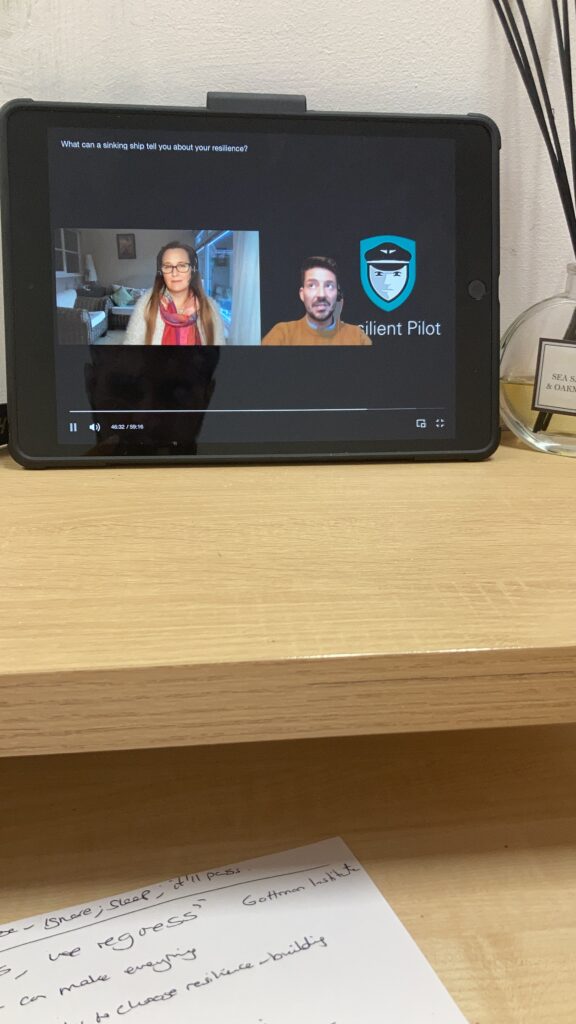
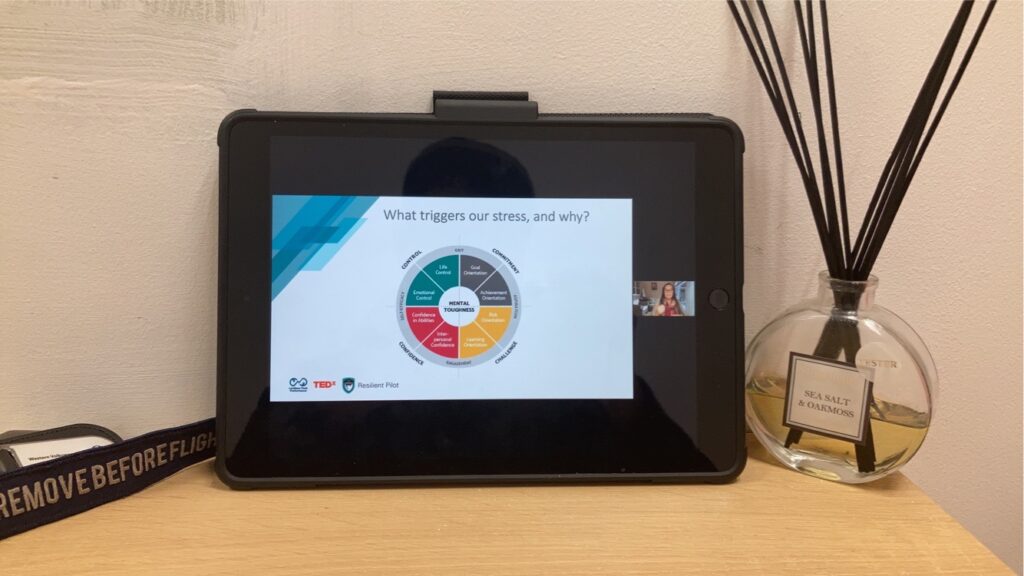
What it means to be ‘Resilient’?
- Having an adaptive, learning capacity – the desire to learn, build and improve.
- An interplay between confidence and competence – in order to be a competent pilot it is important to be confident. And in order to be a confident pilot it’s important to be confident. These two ingredients are key to being a resilient pilot.
- Risk orientated – trying something new and if it doesn’t work you find a new way.
- Curiosity – finding better ways to work, improve and grow.
- Evolve and respond differently to situations – be willing and open-minded to a stressful situation. A stressful situation is not always a bad situation! Think of it as a way to practise your skills!
- Bounce-back ability – how quick do you bounce back to negative situations?
- Never giving up – regardless of how overwhelming the situation is, e.g. poor affordability to your dream to fly – there is always a way. However, doing nothing will have zero impact.
- Determination, perseverance and grit as the input and resilience as the outcome.
Joanna’s experience
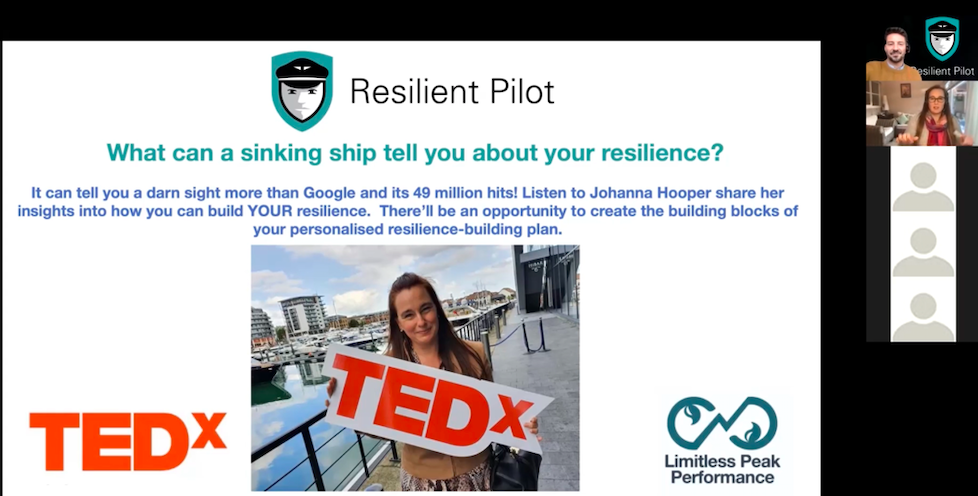
Johanna Hooper started her talk by introducing herself as a retired commander in the Royal Navy in which she served for 23 years. She shares her experience in the near-catastrophic flooding onboard the Antarctic vessel HMS Endurance. Here, she introduces the idea of a stressful situation – a bouncing vessel in a rough sea, in the middle of nowhere with the main control switch room rapidly filling with water per second. All of which she experienced – you cannot imagine a worse situation to be in! Immediately, the crew set a deadline of 12 minutes to evacuate into life rafts. It was the aftermath that would teach Johanna the idea of building resilience after a stressful event.
Following the incident, Johanna goes onto explain the stress symptoms she faced. This included insomnia, an elevated heart rate, speaking fast in any situation and feeling pins and needles. Johanna explains a way to identify what her stress levels were for a given day was to see how many of her fingernails she had chewed. A single fingernail chewed was a good day!
What worked for Johanna?
What really helped Johanna was to be able to identify: the cause, trigger factors and her symptoms. This helped break down what was happening in order for her to properly treat her stress levels and build resilience.
In order to treat insomnia she put in practical interventions (low blue light exposure/caffeine and a fixed bed routine). She went one step further to identify the underlying cause – low confidence. She began putting in action-based interventions to tackle this – such as:
- Changing the narrative (re-focussing on achievements and success)
- Vision for the future (forward-thinking and planning for success)
The sleep hygiene addressed the immediate impacts of the incident, whilst finding interventions to tackle low confidence addressed the underlying cause for a long-term investment. This gave her a sense of ownership and direction to re-focus thoughts to achieving her goals.
What works for me?

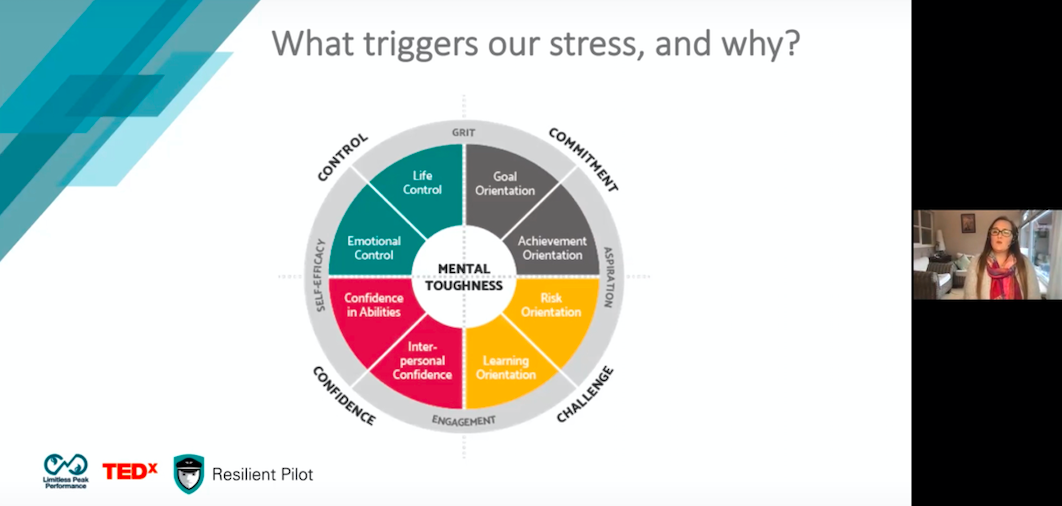
Later, Jo explains it’s important as individuals we run our own diagnostics and don’t rely on a generic diagnosis and treatment from Google – as another person’s solution may not be the best one for us. Our experiences are individuals as are our symptoms. Therefore, it’s important we take time to consider what is the underlying cause and how we can create personalised action plans to tackle the underlying cause and build resilience.
Here’s an analogy for you. Let’s say you or I have an underlying condition, and we visited the doctor without informing them of the issue. The doctor may write up a generic prescription – but how likely is it the treatment will work? Or can we expect it to treat the underlying condition. Of course not. This is because there is not enough information about the condition to put in an effective intervention – while the doctor can utilise the limited information and interaction he has had with past patients – this will not be as effective in treating you. In the same way – after a stressful incident it’s important we can reflect and undergo self-assessments using all the information at our dispensary for an effective solution.
What questions to ask?
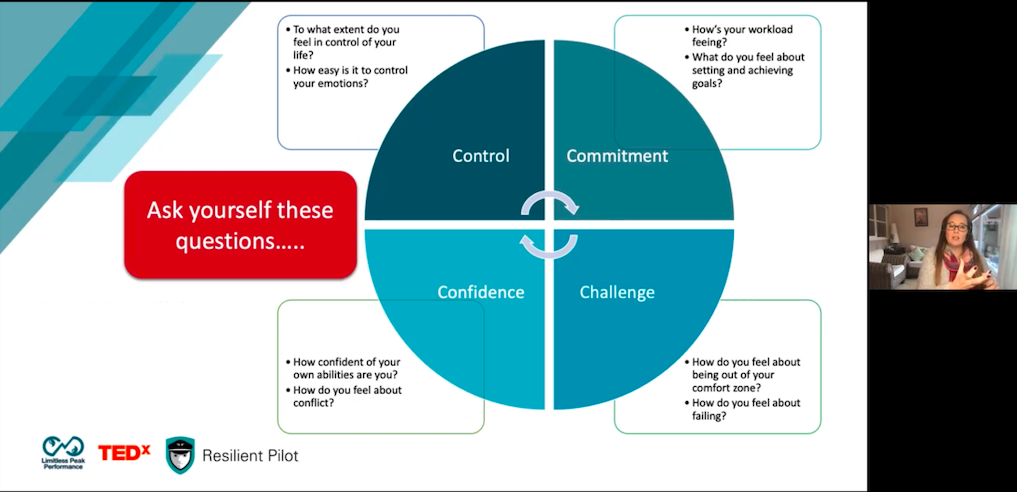
Following a stressful incident its key to ask questions, such as:
- What is the underlying cause?
- What are the trigger factors?
- What are the symptoms, and the impact they are having?
- What action-based intervention have I put in place to tackle this?
Resilient management strategies
- Changing your mindset: the importance of being calm under pressure – asking questions to self, such as ‘What’s the worst that can happen’.
- Learning about one self and evaluating past successes/failures.
—- Think confidently —
Under Stress, We Regress
Gottman Institute
Johanna later mentions we need confidence to achieve resilience – confidence can make everything look good or bleak. Thinking confidently can allow us to see a situation different than it is – for example – do we see the glass as being half empty, or half full? Can we identify our weakness to be short-coming, or potentials for us to grow ? Is it a disability or a different ability? Negative feedback or constructive criticism?
Thinking confidently has a real role to play in stressful situations. As a pilot there are constant stressful situations we are placed in – and it’s essential we make the right decision. This cannot be clouded by stress or low confidence in oneself to tackle the situation. Being calm under pressure, thinking confidently and being resilience are not innate nor inherited– these are skills that we develop. And in order for us to develop we recognise areas of weakness and take actions to build essential skills and our confidence. But having determination and aspiration to improve is the first step.
Responding to stress and building resilience

One method Johanna describes is picking 3 areas of development – such as low confidence in order to build resilience. Rank each focus as a priority in ranking 1, 2 and 3. Then define the cause and the symptoms associated with this. The necessary action you will undertake. And most importantly put a timeframe on when the action will be completed. Following this, review whether the action has been successful, and if not – why not?
In the seminar, a pilot reflects on her co-pilot and his actions during training. He completed a pilot MPL training with an airline – the pilot was laid off due to bankruptcy. At this point it is easy to lose hope and fall into despair. However, following reflections the pilot entered into training for the second time – undergoing another set of stressful ATPL exams – and was issued an ATPL license. And now he has been flying commercially for 5+ years.
I hope this example shines light on the idea of resilience. Remember, it’s not about what happens to you but how you choose to react. This will demonstrate what it means to be an excellent airline pilot.
Now, this is a great opportunity for you to think about certain stresses or situations that has helped you build resilience – reflect on why this has been the defining moment, and how it has helped you become resilient? What can you do to respond to future situations to build resilience in the future? And what lessons are there to learn from resilience in order to be a successful pilot? I hope this summary from the resilience seminar has helped you in some way to build resilience in the future.
Happy flying.
